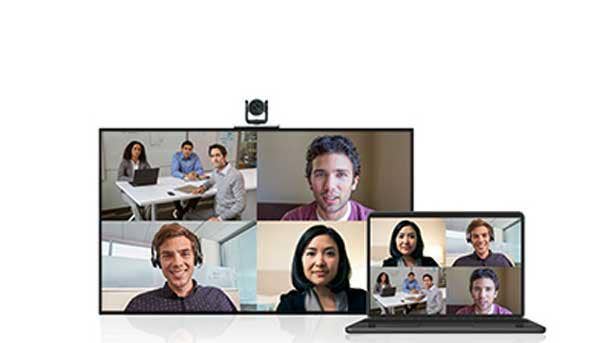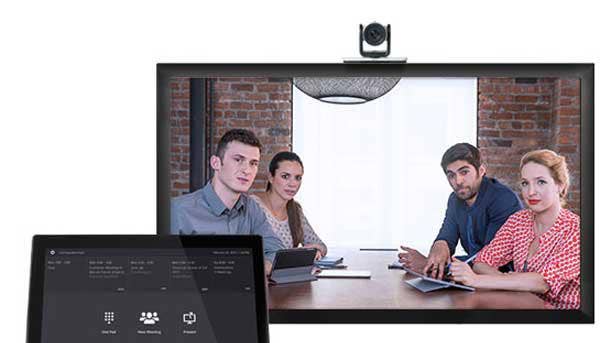Poly’s Nick Tidd On Hybrid Work And Tackling Supply Chain Constraints With The Help Of Partners
The videoconferencing giant has rolled out Renew, an environmentally friendly buyback program that is helping Poly, alongside its partners, grapple with ongoing supply chain challenges while empowering hybrid work and return to work for customers, the company’s channel chief Nick Tidd told CRN.

A Market In Transition
Videoconferencing giant Poly, formerly Polycom and Plantronics, has risen to the occasion over the last nearly two years as demand for collaboration technologies went through the roof. The only thing standing in the company’s way right now? Supply chain challenges.
That’s why Poly unveiled its Renew program in October. Not only is it helping Poly hit some of its Green initiatives, but it’s helping the company and its channel partners work around product availably roadblocks with recycled or refurbished hardware. Customers are able to upgrade their home working setups and businesses returning to the office can renovate their spaces and make way for the voice and video solutions that users have grown accustomed to at home, and it’s thanks to the Renew program.
Nick Tidd, Vice President, Global Channel Sales at Poly, sat down with CRN to talk about how Poly’s Renew program works and the benefits it’s extending to partners, the importance of a multi-platform approach to collaboration, and how management will be a huge area of opportunity for Poly’s growing partner base in 2022.
Here’s what Tidd had to say.

How is the return-to-office/hybrid work trend boosting business for Poly and its partners?
We’re definitely a market in transition. Speaking from a Poly perspective, as we’re seeing return to office, people are expecting that same technical capabilities that they got used to at home and want to also have in the office. As many of us have learned to share content properly in a video conference, as we’ve attended [meetings on] multiple platforms, as we moved from standard desktop phones, to headsets for soft clients, we really see the trends in the market -- like demand for headsets -- not slowing down. Folks are returning to the office and as softphones become a critical component, you still need a headset to go with it. Obviously, supply chain is playing a key role in all of that. Pre-COVID, less than 10 percent of offices had collaboration spaces in them. Now it’s the new norm. We’ve got so used to adopting video because it was a requirement during COVID, so as folks are returning, IT organizations are having to redesign rooms. We all got used to multi-platform where we saw the use of Zoom and Microsoft and others, so the ubiquity of the platform and multi-platform is the demand. As [businesses] take away proprietary platforms and adopt new technologies, there’s an upgrade cycle taking place in the conference space. Management is going to be a pain point to all of this -- how you tie them all together. If you look at our tenants of product portfolio, we’ve been steadily gaining share in each of our major categories. We’re seeing partner recruitment activity like I’ve never seen before. Partner accounts are up year over year and when I say partner count is up, it’s not people that are enrolling in program, it’s people that are actually transacting with us. Our ability to provide agnostic platforms in both video and voice, and headsets are playing to our strengths.

Tell us about the Renew Partner Program and how it’s helping Poly address supply chain challenges?
One of the programs that we launched as a pilot here in North American was our Renew program. The concept behind that was two-fold. One, I had a supply chain problem, and so, I’m trying to get my own product back. And two, the upgrade cycle. We wanted our partners to be able to have a mechanism to get credit for the trade-in, but also give a voucher for future purchase. We’re now just two months into that and we’re day over day increase the number of partners that are taking advantage of it. It also plays very nicely into our green initiatives. The product is not finding its way into a landfill and it’s given us the ability to bring the product back. We’ll refurbish it, we’ll put a Poly warranty on it, and we’ll put it back out in the market to try to alleviate some of the supply chain shortages.
Supply chain for us is not only chips, but it’s also camera sensors. Many of us in multiple industries are fighting for the same sensor -- the one we use in our cameras is also used in the automotive industry. So, supply is going to continue to be a challenge for the foreseeable future. We’re working with our partners to communicate the best we can on delivery dates and communicate effectively when we will have enough product to meet demand. I don’t think this is something that’s going to solve itself quickly. We’re continuing to work through this with our suppliers globally to tackle this.

What are your goals for the Renew program and are you incentivizing partners around green initiatives?
It’s a very good question and I had the same question because we’re doing the refurb ourselves in our factory in Tijuana. I know the size of my install base -- there are more than 2.5 million phones out there today and all of those phones are eligible for the recycle program. With the Renew program, they don’t necessarily have to buy phones again, as I talked about the kind of the market in transition, I am replacing that desktop phone with a speakerphone because I want to touchless situation. I want to replace it with headsets because I want to have that same experience that I had before at home. And so, by giving the voucher back for purchase, I’m actually helping facilitate the transition that we’re seeing in the marketplace.
We had a trade-in program for many years, like many other manufacturers. It’s one of my most commonly used programs for end user upgrades. But I had not programmatically approached the refurb market to certify refurb partners. [Renew] is not only is solving for green initiatives, but it’s cleaning up the refurb market, and also helping me alleviate the supply chain issues. It’s a very simple exercise: end user reaches out to partner, partner comes into our portal and creates a request, we provide a [Return Material Authorization] RMA number, the products are shipped back locally, we pay for the freight, we receive it, we do a digital check, and then send the voucher to the partner for them to pass through to end user. It’s a very seamless online exercise. We’re seeing some very large corporations take advantage of it and I’m seeing a cross reference of partners that have started to take advantage of it. Really, it’s been about getting the word out.
[Incentivizing partners on Renew/green initiatives] is actually one of the areas that I’m looking at. I’ve been asked by partners to put some financial incentives around this. I think there’s a double win already for the reseller community today because I’m giving you credit today for bringing something back that you don’t have to touch, so you have no logistics costs, and I’m giving you an upgrade opportunity to go back to that customer with at the same time. We are channel centric company and all of our commerce flows through the channel. So, I’m giving them a double bookended opportunity to create a compelling event with the end user community. But yes, [incentives] are something I’m considering at this point.

How big of an opportunity will collaboration management by for partners next year?
It’s significant. When I did my last [partner] survey, services revenue was up in the top five things most important to them. Our program allows them to sell both Polly-branded and Partner-branded services and when I look at the services we deliver, 50 percent of them are partner-branded. So, our partners are looking for us to give them financial streams to be able to do things like remote management, device management, extended warranty, break/fix, and then we want to evolve from there into monetizing analytics. I give a lot of that away for free today in the in the in the app and that is something that the MSP community is looking to take advantage of. Our large AV integrators; many of them have single panes of glass that they measure with and they’re looking to consume API’s into that dashboard. So, it is a significant [area] of focus for me over the next 24 months.

Supply chain issues aside, how can partners be successful with Poly in 2022?
We’ve created these enablement journeys where new hires and partners come into the portal and sign up for … small, snackable, bite-sized training, as opposed to having to sit there for two hours and earn their way through accreditations. [Things like] building out the next-gen video room, the persona research, and ensuring that they understand the migration strategies behind moving from a proprietary platform to a multi-platform. I’ve seen a significant spike in enablement tools. I live and die by the analytics of our dashboards in the partner community because of the size of our community and when I look at when I look at page views, right up there is certifications, demo equipment, and program support, like the Renew program. We’re continuing to build out on my roadmap for the next three months, and more tools around financials and analytics for profitability is also top of mind. So is collaborative quoting -- How do I take the personas and do guided selling? That platform is being launched internally shortly, and then I’ll roll it out to the partner community in the April timeframe. Content syndication is another big one that we’ll be rolling out over the next several months. Content syndication is helping our partners manage the showcases on their sites so that they can be relevant, they can be viewed as a trusted adviser, and taking that responsibility off of them so that we have that we have a collective means to guide end users in the right choices to make for the technology platforms and have the persona they need.
My message to the partners for 2022 is take advantage of the transitions that we’re seeing as we embrace a return to work and hybrid work -- be aware of the transitions [and] ensure that you’re equipped for those transitions. As somebody who has been most of my career has been in networking and [unified communications] UC, the next window is definitely centered around video everywhere and mobile enablement, so pay very close attention to the personas of how the technology is being used and don’t sell on function and feature, but sell on use.